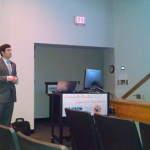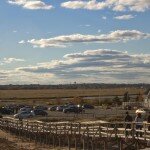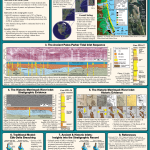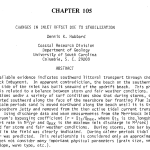Science!
August 26, 2015 by Chris Hein
VIMS, Gloucester Point, VA
The VIMS team is back home after a lot of field work and meetings this summer . . . and none of us is quite ready to start classes TODAY!
However, I for one can say this was a very productive summer for our work on the Plum Island Research Project. We collected cores from across the Great Marsh to determine how fast the marsh is growing in different areas and if it can keep pace with an ever-faster rising sea level. We finished our deep coring across Plum Island and now have cores going down 72 feet below the island surface – down into sand and mud laid down 15,000 years ago (Claudia is now working up these cores in the lab – check out her post from this past winter describing how she does this). We collected a series of cores across Joppa Flats to look at the record of human influences on sediment supply down the Merrimack River. We collected yet MORE cores in the marsh behind southern Plum Island in collaboration with the Parker River National Wildlife Refuge to look at the possibility of opening up parts of some of the freshwater ponds to salt water. AND, we worked with a larger team from Boston University and the University of New Orleans on collecting hydrodynamic (wave & tide) data for a model being developed as part of a multi-institution project funded by the Hurricane Sandy Relief Fund.
In other words, it was busy and all of those data give us A LOT to do over the next months as we work up samples in the lab and data on our computers. Yep, gonna be a long winter – but I’m psyched for the discoveries to come and to sharing them with the community around Plum Island.
However, for me, the most exciting part of this summer was a two-day meeting we held at the Refuge Headquarters in mid-August. This was the whole Plum Island Research Project Team – nearly 20 of us in total, with some excellent guest speakers (Annapolis Way homeowner Bob Connors, Storm Surge Chair Mike Morris) to boot. Each team presented their results to date – great findings about the cycles of erosion, human impacts on the Merrimack River Valley and Plum Island, chemical signatures of the Merrimack River found in sediment cores, economic analyses of how housing values on Plum Island change in response to shifting erosion, public perceptions of the erosion problem and what can & should be done, and a list of potential policy prescriptions. I think every one of us came away very excited about the range of findings and what we hope we can add to the discussions about the future of Plum Island.
We’ll have more to share publicly in the spring as we complete analyses, but keep checking back here over the next months for more updates – we look forward to sharing them all..
– Chris


 December 2, 2015 - VIMS, Gloucester Point, VA As the title says, it’s been a while. Sorry about that – this semester has been very busy. But, I wanted […]
December 2, 2015 - VIMS, Gloucester Point, VA As the title says, it’s been a while. Sorry about that – this semester has been very busy. But, I wanted […] August 26, 2015 - VIMS, Gloucester Point, VA The VIMS team is back home after a lot of field work and meetings this summer . . . and none […]
August 26, 2015 - VIMS, Gloucester Point, VA The VIMS team is back home after a lot of field work and meetings this summer . . . and none […] Posted: February 21, 2016
Posted: February 21, 2016 Posted: December 2, 2015
Posted: December 2, 2015